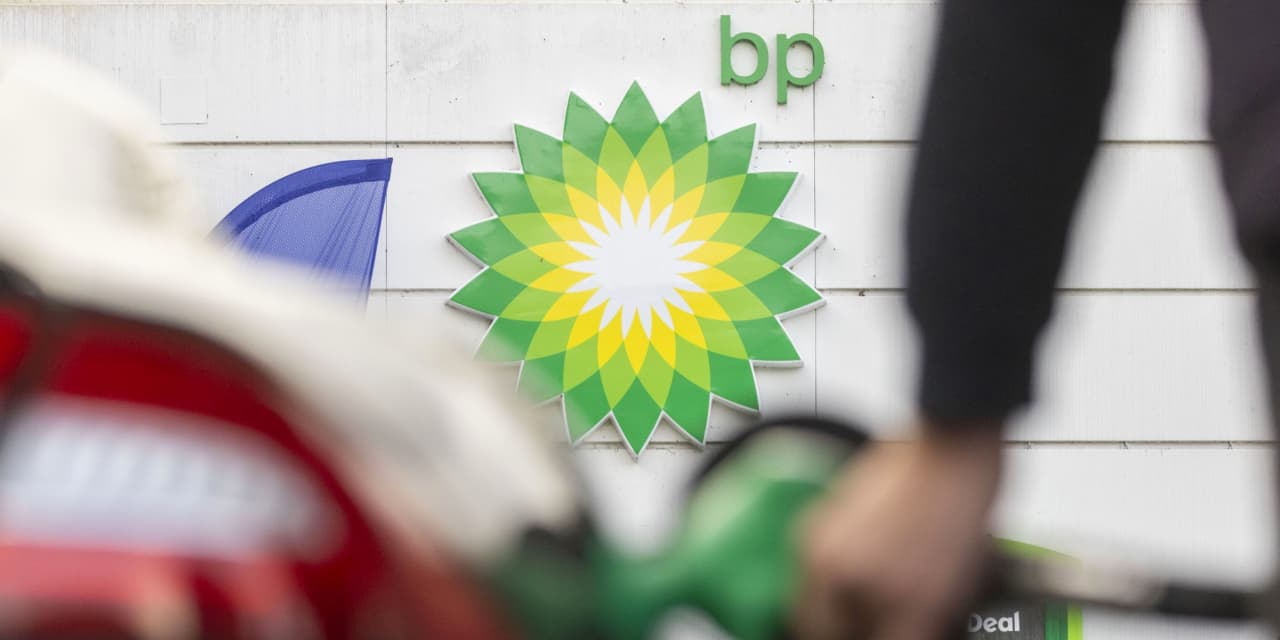The former British Petroleum made no investors happy after it said in 2020 that it would seek to cut its hydrocarbon production by 40% by 2030, while directing an increasing share of its spending to clean energy investments, including electric-vehicle charging stations, biofuels, hydrogen, and renewable power. Climate-focused Europeans still saw
BP
as a traditional energy company, while American investors preferred
Exxon Mobil
and
Chevron,
which remained committed to their core oil-and-gas businesses.
BP is getting back to doing what it does best—and that’s good news for its beaten-down stock.
BP has had a change of heart. The company has refocused on its oil-and-gas business—particularly its attractive, U.S.-oriented operations that are underappreciated on both sides of the Atlantic. BP is one of the two largest oil producers in the Gulf of Mexico and has a strong position onshore in the Permian, Haynesville, and Eagle Ford regions of Texas. By 2030, BP aims to boost its American oil-and-gas production by more than 50% and get half of its projected output of two million barrels a day in the U.S.
The market hasn’t noticed quite yet. The company’s U.S-listed shares trade around $34 after hitting a new 52-week low this past week. They fetch just seven times projected 2024 earnings of $5 a share, cheap even for big European energy companies, which trade inexpensively versus their American peers.
BP’s 5% dividend yield is the highest among oil majors, and the dividend remains a top priority: The company aims to boost it by 4% annually even if benchmark Brent crude prices fall to $60 a barrel from the current $80.
The company also has an active share-repurchase plan. It probably bought back about $8 billion of stock in 2023, or 8% of its market value, and is expected to repurchase another $4 billion to $6 billion in 2024. BP is due to report fourth-quarter results on Feb. 6.
“There is so much value in BP that is not being priced in,” says Bernstein analyst Oswald Clint, who has an Outperform rating on the stock and a price target of $55. He did a sum-of-the-parts analysis that came up with a value that’s about double the current stock price.
Realizing that value will be the job of BP’s new chief executive, Murray Auchincloss, who had been serving on an interim basis since September. Auchincloss, the former chief financial officer, is a Canadian who got his start with Amoco and joined BP when it bought Amoco in the late 1990s. He is viewed as shareholder friendly, which means he may stand up to climate activists and European institutional investors who have pressured BP and its United Kingdom rival Shell to decarbonize their portfolios. Clint applauded the new CEO, writing that Auchincloss is “well-known and respected” by investors.
To underscore its commitment to its traditional energy business, BP held an investor meeting in Denver in October to highlight its onshore U.S. energy footprint. It plans to double production to 650,000 barrels a day by 2030 and could quadruple annual free cash flow to $4 billion.
BP targets about $55 billion of earnings before interest, taxes, depreciation, and amortization, or Ebitda, in 2030, up from an estimated $43 billion in 2023, with about $12 billion coming from its transition businesses, up from $4 billion in 2022. If it can hit that overall target, there should be plenty of room for dividend increases and ample share buybacks.
The company has plenty of oil and natural gas in the ground. BP puts its currently recoverable resource base at 18 billion barrels of oil equivalent—20 years of production at current levels.
“The stock has flatlined in the past year despite wholesale upgrading the returns and earnings profile of the business,” says Cyprian Yonge, an investment analyst at T. Rowe Price, a BP holder.
Even with the pivot, BP isn’t going to be mistaken for Exxon or Chevron. Its slogan is “performing while transforming.” The company plans to spend about $16 billion annually on capital expenditure through 2030, with about $7 billion of that total on what it calls “transition growth engines.” That’s a much higher percentage than at the U.S. majors.
Investors aren’t happy with BP’s wind business, where it took a $540 million charge last year for a financially unviable offshore project in New York state in partnership with Norwegian oil company
Equinor.
Instead, investors would rather see the company focus on its desirable and growing mobility and convenience division, which houses its gas stations, related convenience stores, and EV charging stations.
T. Rowe’s Yonge says the company needs to “deliver in upstream and focus on the higher-return parts of the low-carbon value chain.”
There’s also a chance that BP will attract an activist investor, as Shell has. An activist could seek to break up the company, given its high estimated sum-of-the-parts value. With its large but digestible market value of less than $100 billion and $22 billion of net debt, it could be a good acquisition candidate for the larger Shell. BP is now valued at two times its projected 2030 Ebitda, a rock-bottom multiple. London-based BP is closely associated with its home country, but like Shell, it would benefit if it redomiciled in the oil-friendlier U.S.
There are a lot of things that could go right at BP, and not a lot is factored into a depressed stock with a pretty secure 5% dividend yield. It’s a low-risk way to play the future of oil—and perhaps a lot more.
Write to Andrew Bary at [email protected]
Read the full article here




